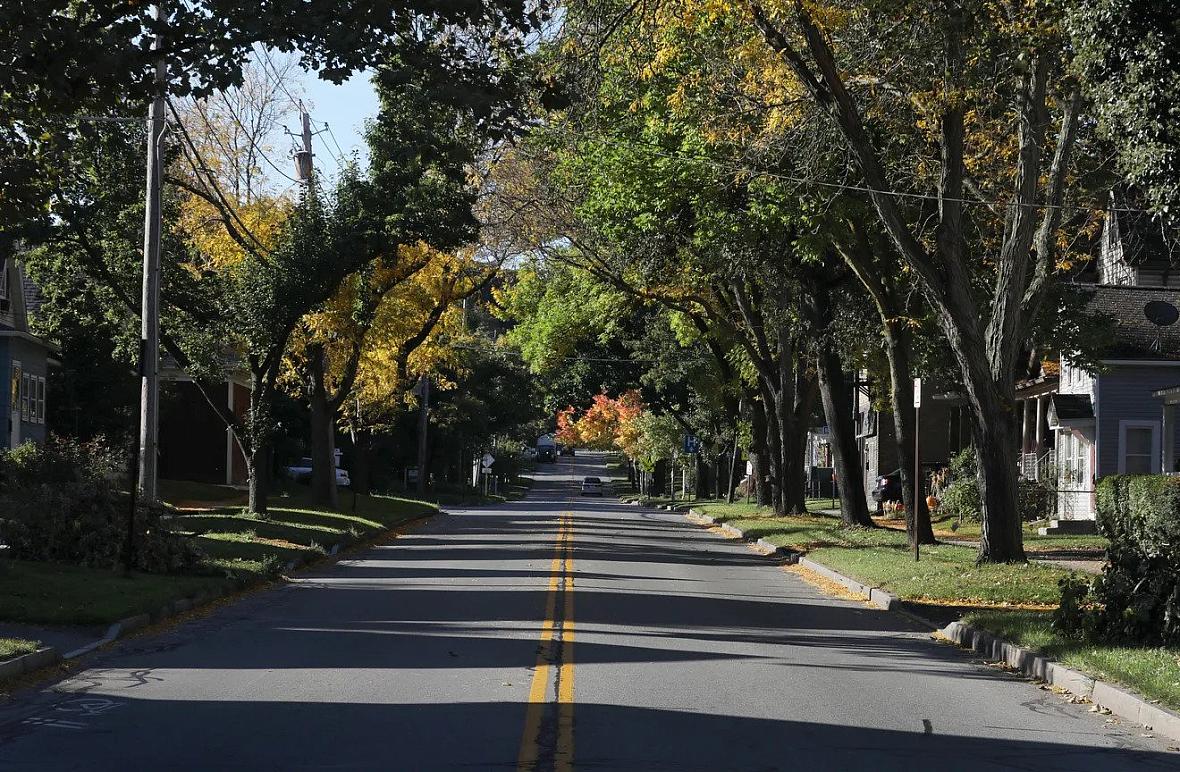Rochester's trees make Landmark Society of Western New York's annual 'Five to Revive' list
This story was produced as part of a larger project for the USC Annenberg Center for Health Journalism’s 2021 Data Fellowship.
Other stories by Justin Murphy include:
How did some Rochester neighborhoods become greener than others?
‘I now see the disparity is real.’ For Rochester’s mayor, trees are a justice issue
Rochester’s trees are celebrated, but not everyone gets to have their time in the shade
This project mapped every tree in Rochester. Here’s how we did it
Walk through Rochester's Washington Grove, a rare remnant of nation's old-growth forests
Sign up to learn about Rochester's trees by texting with reporter Justin Murphy
Tell us the story of your favorite tree in Rochester. Where is it and why is important?
Read about Rochester’s most beloved trees and share your own story

Shawn Dowd/Democrat And Chronicle
Rochester's urban forest should be viewed as a community asset in need of protection, according to the Landmark Society of Western New York.
The regional historic preservation organization on Wednesday included the city's trees its annual Five to Revive listing of priorities for revitalization.
Executive Director Wayne Goodman cited the Democrat and Chronicle's 2022 series on the topic, The Forest in the City, which highlighted the historical reasons and current implications of the disparities by race and class in the tree canopy.
[The Forest in the City: Rochester’s trees are celebrated, but not everyone gets to have their time in the shade]
"Advocating for protection of the existing mature tree canopy in our neighborhoods is not enough," Goodman said in a statement. "It is imperative not to overlook the lack of trees in many of Rochester’s neighborhoods, particularly those in the city’s northeast quadrant."
He called for an updated urban forest master plan that, for the first time, takes inequitable tree coverage into account. That update is happening now, and Mayor Malik Evans has committed to a net increase of 6,000 trees before his term in office ends in December 2025.
In an interview in the fall, Commissioner of Environmental Services Rich Perrin said the goal was to reach a stocking rate of 85% in each quadrant. That means a street tree exists in 85% of the sites where one possibly could go.
"What we’re really looking at is how to add about 6,000 trees to not just mitigate but eliminate what we see as a major equity issue with respect to the benefits trees provide that are currently not distributed evenly across the city," he said.
The city could potentially take advantage of $1.5 billion in federal funding for urban trees included in the 2022 Inflation Reduction Act.
This is the first time in the 10-year history of the Five to Revive initiative that the Landmark Society has selected a feature of the natural environment.
The other four priorities on the list:
- Hotel Cadillac, the 100-year-old Art Deco hotel on Chestnut Street that closed in 2018 after falling into neglect. A current partnership between the YWCA and CSD Housing aims to rehabilitate the building.
- Mt. Hope Cemetery's Old Chapel, a Gothic Revival-style limestone chapel built during the Civil War that has been unused since the 1970s. The city's 2016 cemetery master plan recommends rehabilitation and reuse.
- Willard State Hospital in Seneca County, encompassing 400 acres on the eastern shore of Seneca Lake in the towns of Ovid and Romulus. The state Department of Corrections and Community Services announced last year it would close the Willard Drug Treatment Campus there, leaving the site's future uncertain.
- The John Wenrich Cabin, a 97-year-old building in Wesley Hill Nature Preserve in Bristol, Ontario County. The preserve and cabin are owned by the Finger Lakes Land Trust, which has left it mostly untouched to focus instead on the preserve's natural features.
For a listing of all the sites and priorities featured since 2013, visit https://landmarksociety.org/programs/five-to-revive/.
[This article was originally published by Democrat and Chronicle.]
Did you like this story? Your support means a lot! Your tax-deductible donation will advance our mission of supporting journalism as a catalyst for change.

